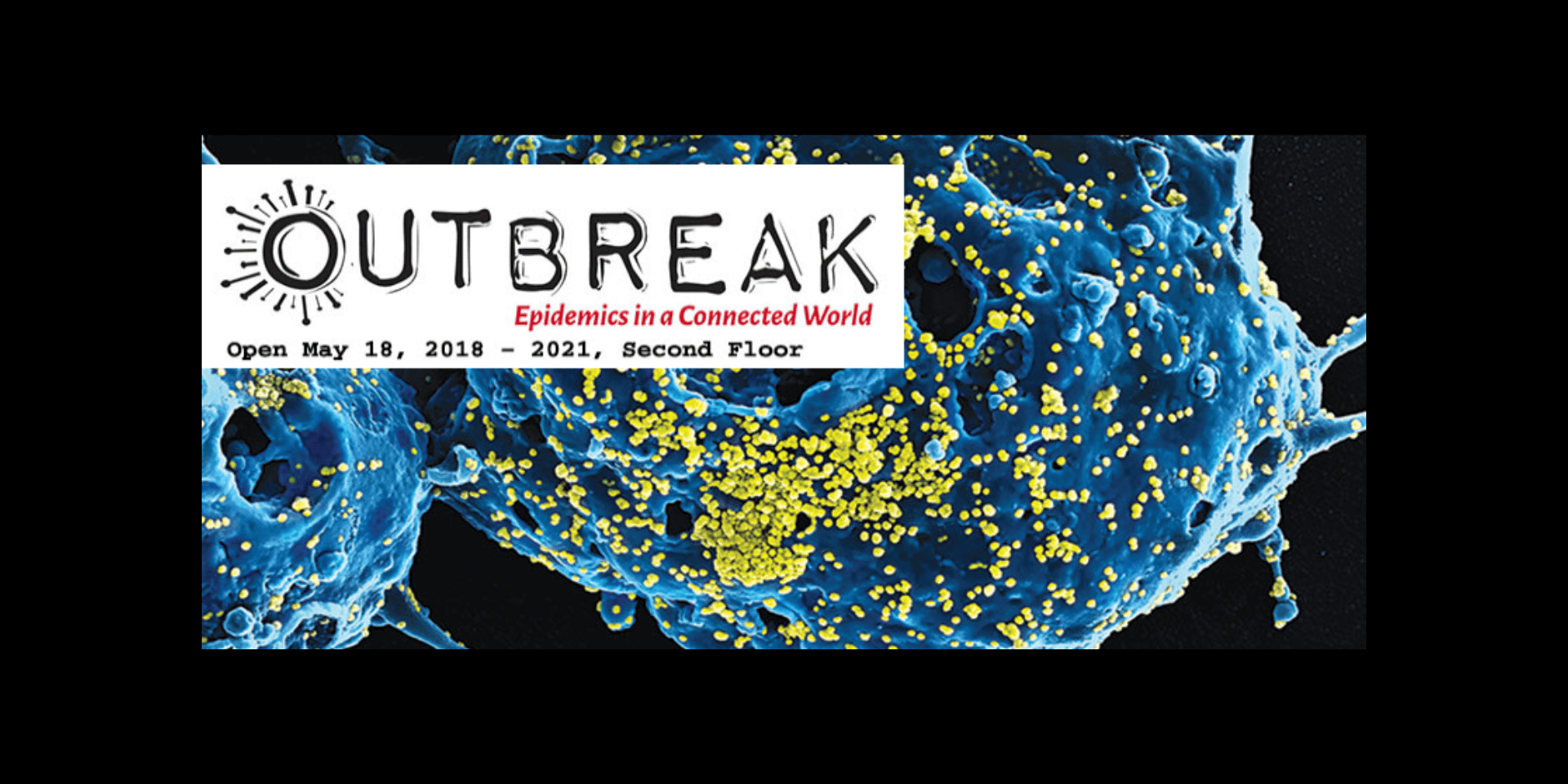
The National Foundation for Infectious Diseases (NFID) is a proud supporter of the new Smithsonian exhibition, “Outbreak: Epidemics in a Connected World,” which will be on display for the next three years at the National Museum of Natural History (NMNH) in Washington, DC. The exhibit focuses on exploring the history and challenges of fighting infectious diseases and raising awareness about pandemic risks.
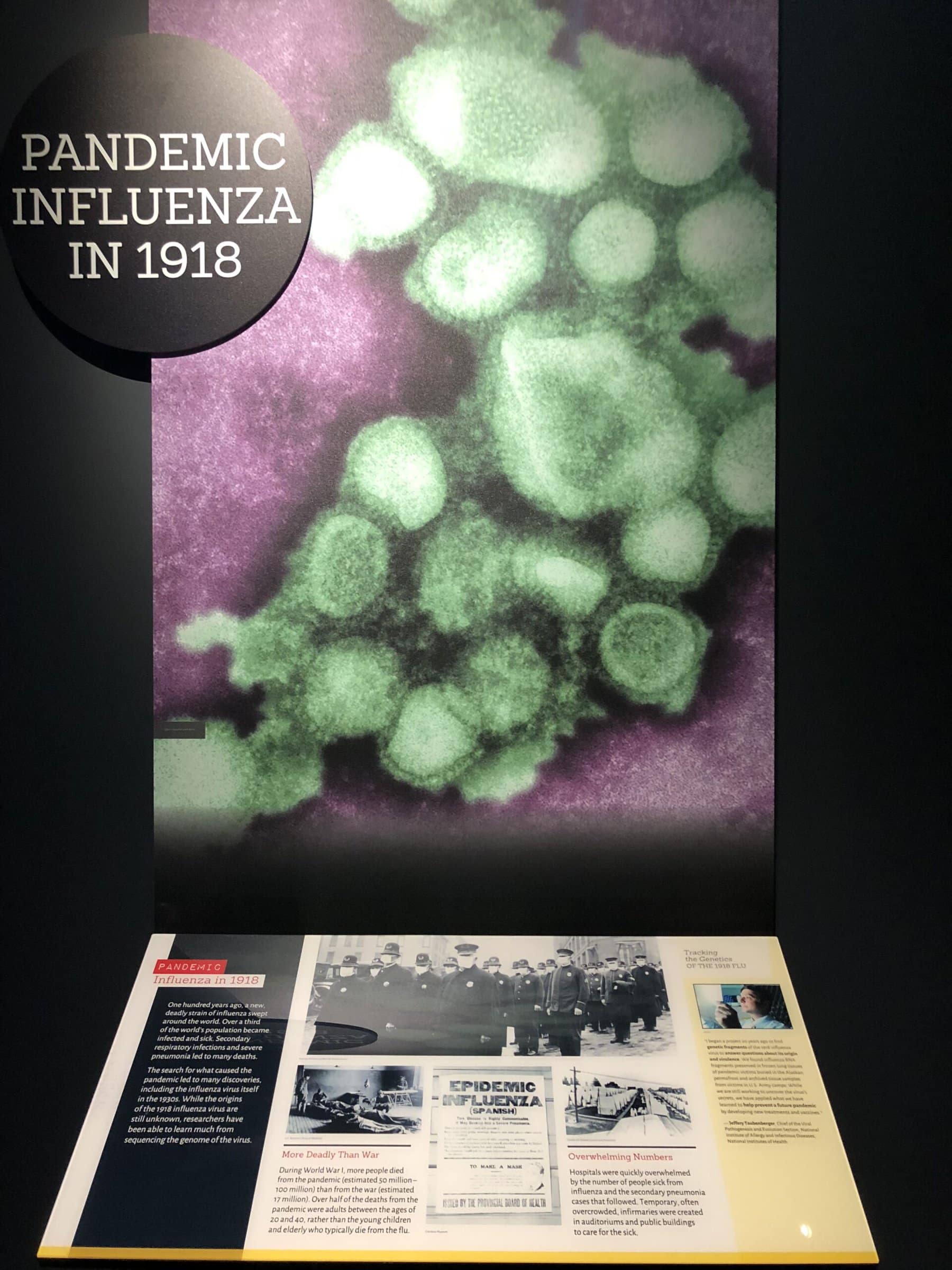 In recognition of the 100th anniversary of the 1918 influenza (flu) pandemic that killed an estimated 50-100 million worldwide (3-5% of the world’s population at the time), the exhibit examines the intricate network between humans, animals, their environments, and microbes—why infectious diseases emerge where they do, how they spread from animals to people, why some outbreaks become epidemics, and how people in different disciplines and countries are working together to stop them. The 3-year exhibit also addresses public fears and media hype head-on, empowering visitors to respond to future epidemics with knowledge and awareness.
In recognition of the 100th anniversary of the 1918 influenza (flu) pandemic that killed an estimated 50-100 million worldwide (3-5% of the world’s population at the time), the exhibit examines the intricate network between humans, animals, their environments, and microbes—why infectious diseases emerge where they do, how they spread from animals to people, why some outbreaks become epidemics, and how people in different disciplines and countries are working together to stop them. The 3-year exhibit also addresses public fears and media hype head-on, empowering visitors to respond to future epidemics with knowledge and awareness.
Our world is more interconnected than ever before and as the global population grows, new interactions with animals and the environment can cause disease epidemics. The 4,250-square-foot exhibition invites visitors to join epidemiologists, veterinarians, public health workers, and citizens of all ages and origins as they rush to identify and contain infectious disease outbreaks. Case studies of HIV/AIDS, Ebola virus, and flu highlight the social and emotional fallout of outbreaks—for victims, their loved ones, and society overall. In fact, the 1918 pandemic, which occurred during World War I, was so severe that it caused life expectancy in the US to fall for three years in a row and killed more people than the war itself.
Exhibition themes include:
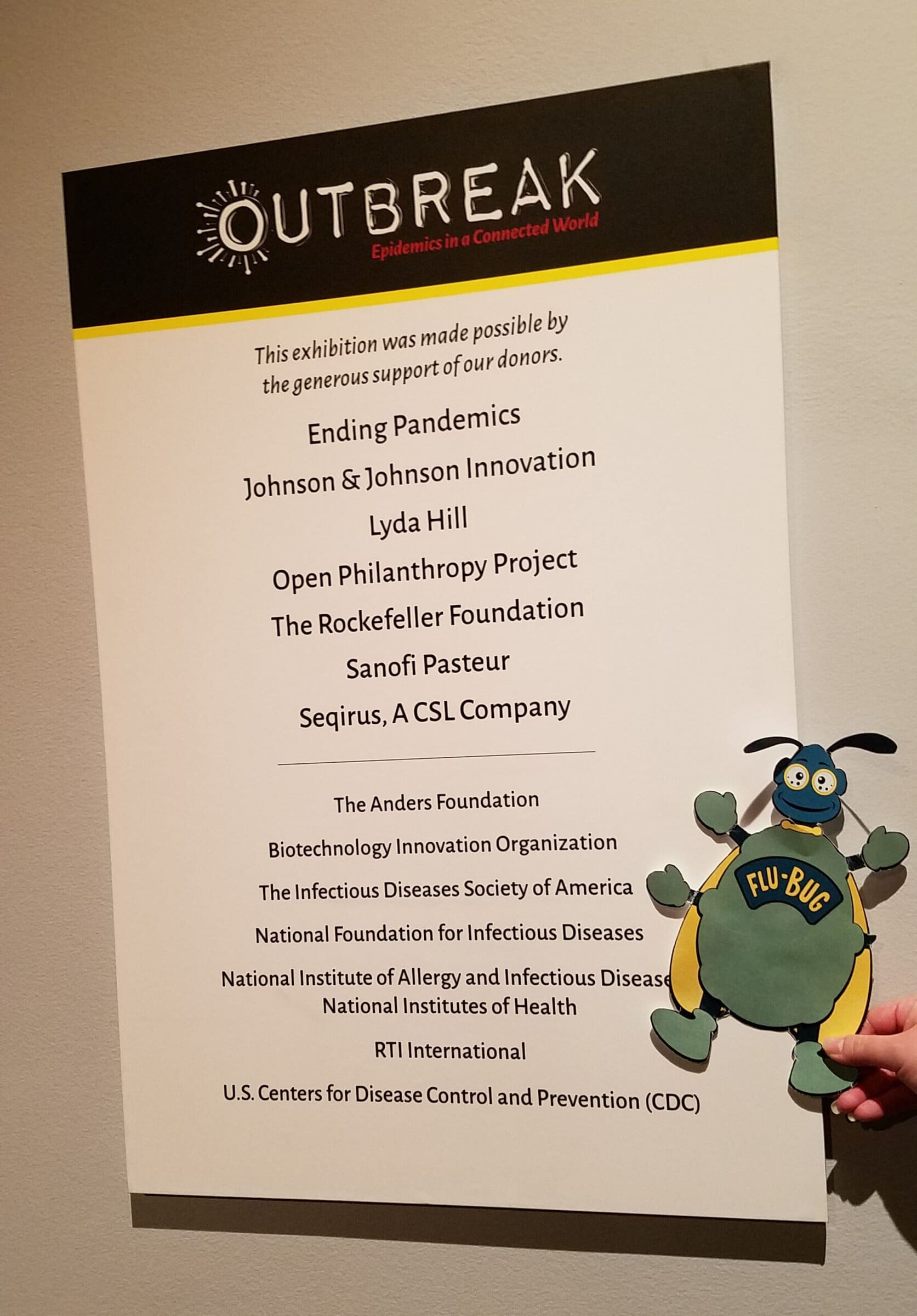
- Outbreak Origins. Discover how microbes make the jump from animals to humans, and how environmental factors play a role in the spread of pathogens.
- Stopping the Spread. Find out how personal behavior, societal changes, and global coordination can decrease the risk of disease outbreaks.
- Detection, Response, and Containment. Meet those on the front lines, from veterinarians to activists, and learn how they identify and control the spread of infectious diseases.
- Disease Profiles. Learn about HIV/AIDS, Ebola, Zika virus, and tuberculosis—where they occur, how they spreak, and how to treat or prevent them.
The museum is open daily from 10 AM-5:30 PM (except for major holidays) and admission is free. Visit the museum website for additional information. For those who do not have the opportunity to visit the exhibit in Washington, DC, the museum in providing a free “pop-up” print-on-demand version of the exhibition that can be customized and adapted to a variety of settings, along with guidelines and templates for translation and customization.
A week prior to the public opening, the NFID Board of Directors got a special behind-the-scenes tour with the curator of the exhibition. We look forward to spreading awareness and watching the exhibition go “viral” in the coming months and years to come!
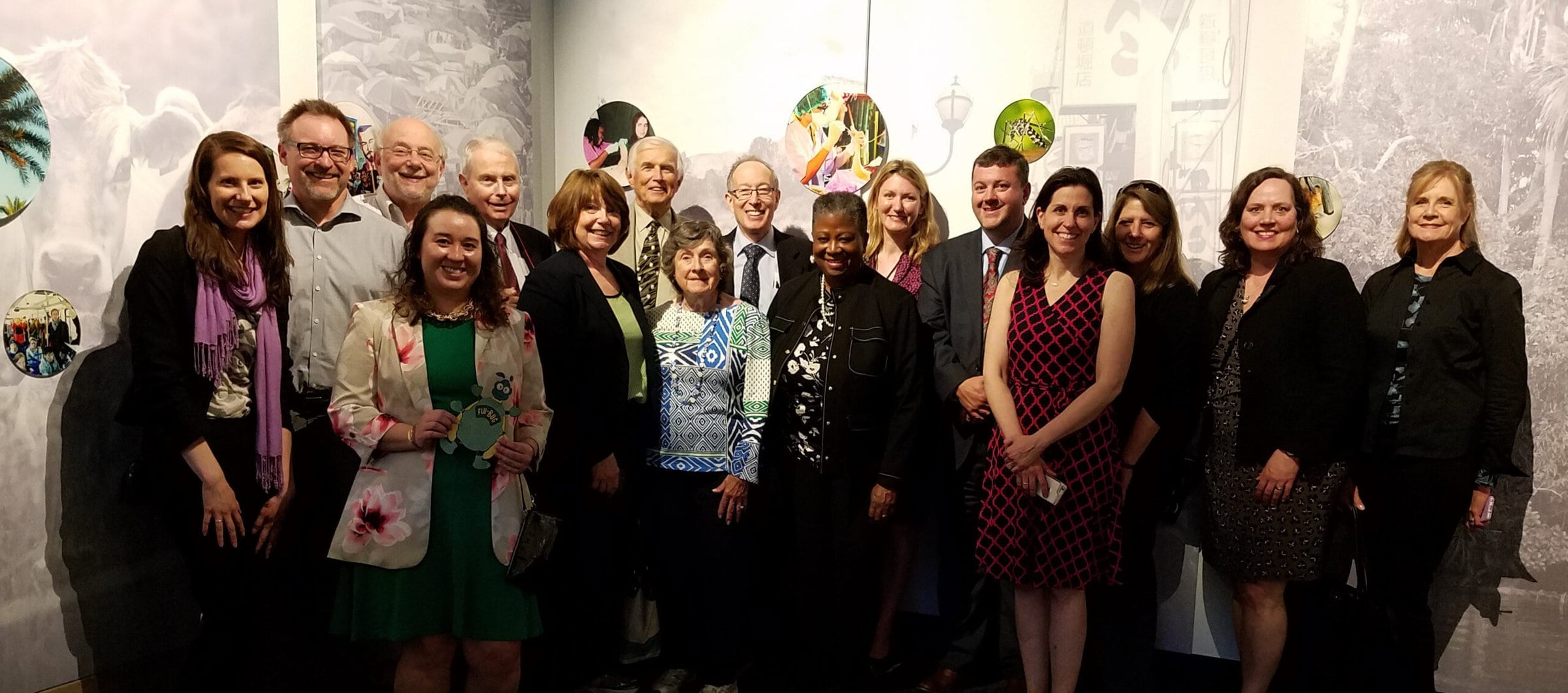
To join the conversation, follow NFID and NMNH on Twitter using the hashtag #Outbreak, like NFID and NMNH on Facebook, follow NFID and NMNH on Instagram, join the NFID Linkedin Group, and subscribe to NFID Updates.
Related Posts
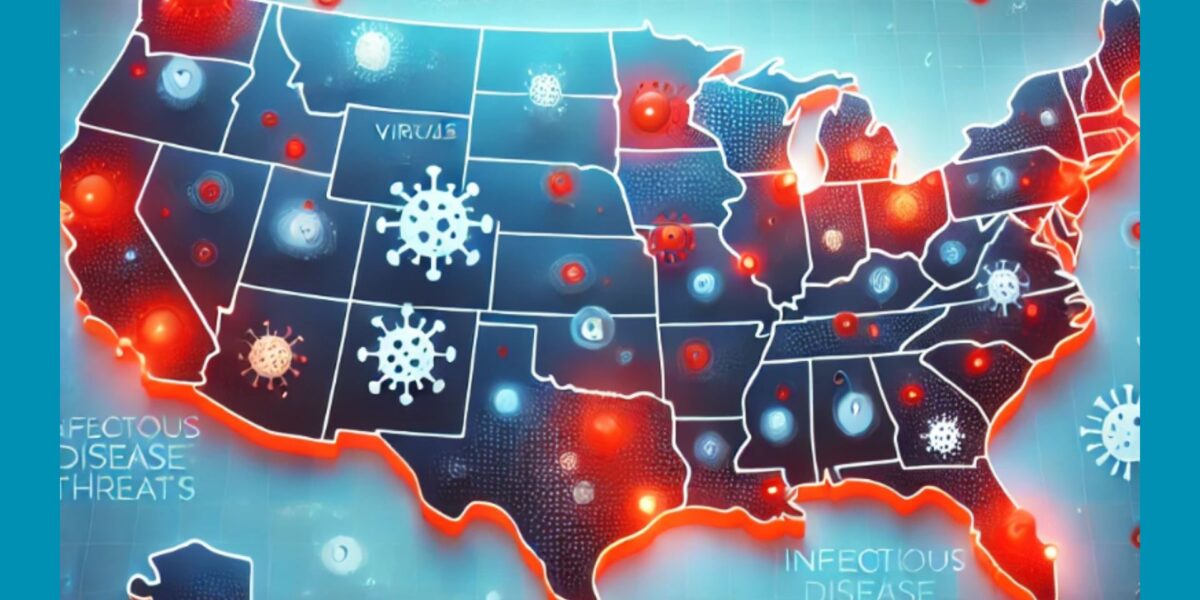
News Round-Up: Infectious Disease Threats
According to NFID website poll, there are several worrisome infectious disease threats. Read recent news on topics of greatest concern, including avian influenza (bird flu), measles, and respiratory syncytial virus (RSV) …

Vaccines and Heart Health: A Vital Connection
Heart disease can increase the risk of serious or fatal complications from respiratory diseases including COVID-19, flu, and RSV

Harnessing the Power of Local Data
NFID dashboard aims to empower stakeholders with hyperlocal data to increase US adult respiratory vaccine uptake
